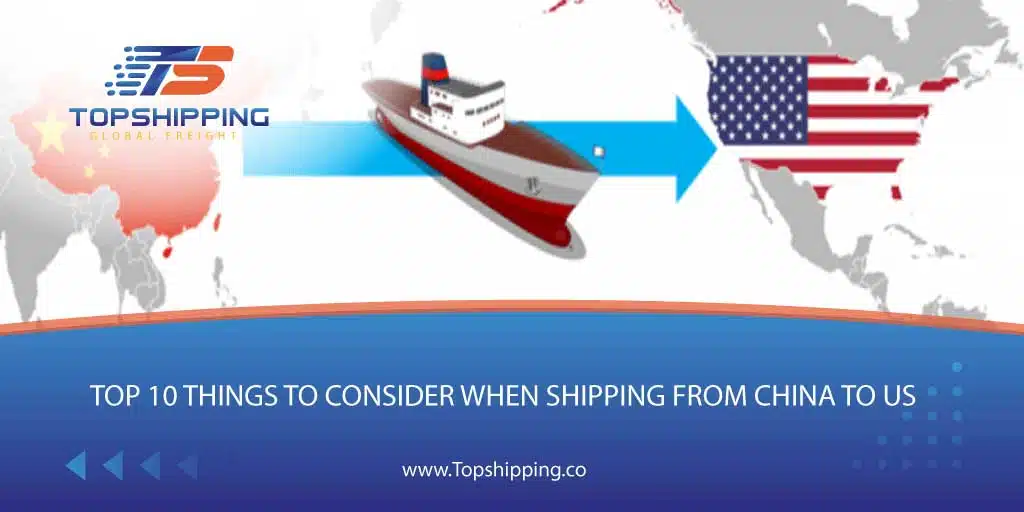

Table of Contents
1.What Documents are Required to Import Goods from China?
Importation of goods from China into the United States involves some critical documents that will be required for easy customs clearance and, at the same time, compliance with the regulations put in place.
Here are the key documents typically required:
Commercial Invoice:
This is a document that contains information on the transaction involved, the description of goods, their value and quantity, and the terms of sale-abbreviated as Incoterms. This is a vital document meant for customs clearance and valuation purposes.
Packing List:
It is a list of the contents of each package or shipment, and the type and quantity of goods included to assist customs officers in verifying the actual contents to facilitate the processing of correct clearances.
Bill of Lading (B/L):
The Bill of Lading is a contract between the shipper and carrier in which the origin, destination, and the transportation method are stipulated. It is also utilized as a receipt of goods and is required for claiming the cargo at the destination port.

Airway Bill (AWB) (for Air Shipments):
An airway bill , like a bill of lading (except for air freight shipments), is a contract between the shipper and the airline. It contains basic information about shipment and acts as a receipt of goods
Customs Declaration (Customs Entry Form):
This form involves detailed information about the imported merchandise, including its classification by using Harmonized System codes, its value, and country of origin, among other relevant information that customs authorities need for assessment and clearance.
Certificate of Origin:
This is a document which authenticates the origin of the goods. It may be required to qualify merchandise for a preferential tariff treatment under free trade agreements or to observe import quotas or other restrictions.
Import License or Permit:
It mainly pertains to the import license or permit in certain countries issued by the relevant authorities of the importing country, especially on regulated goods such as pharmaceuticals, food, or chemicals.

Additional Documentation:
Depending upon the nature of goods and specific regulatory requirements, other documents might be needed to include inspection certificates, sanitary or phytosanitary certificates, or special permits.
All documents presented to the customs authorities should be accurately completed and forwarded for processing, as incorrect or incomplete presentation may lead to delays, fines, or penalties.
This process of documentation could be effectively carried out in collaboration with experienced freight forwarders or customs brokers.
2.How to Import from China to the USA
Shipping goods from China and importing for reselling into the United States can be summarized into a number of key steps, which help in ensuring that the transaction is smooth and successful.
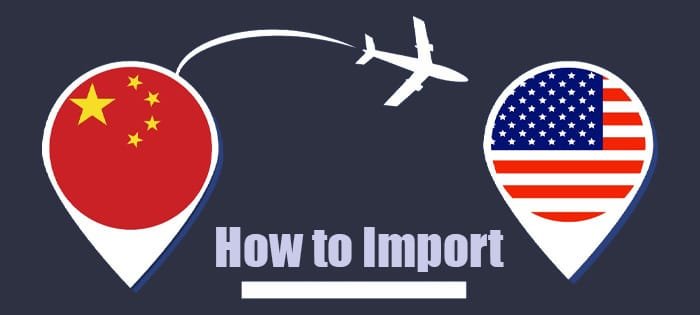
Product Selection:
First, pick what you will be shipping. Do thorough market research to identify those products that are on high demand in the USA and those commonly manufactured in China.
Tariff and Regulation Research:
Research any special tariffs or regulations in the USA on the selected products. Any extra costs or inspections to be done at the border. If there are heavy restrictions, look for other options that won’t be a hassle.
Supplier Identification:
After selecting what products to get, identify and note the credible and reliable suppliers of the preferred merchandise. Websites like Alibaba provide a ready platform to source suppliers in China.
Tax Estimation:
Estimate the tax liability that will be incurred when those selected products are imported into the USA. Understanding the implications of taxes is quite useful for planning finances effectively.
Incoterms Definition:
Explain the Incoterms that should provide governance over your shipment. Incoterms detail where the responsibility of the buyer and seller stands concerning transport, insurance, and customs clearance. Choose terms based on your best business operation and one which you feel best addresses your risk tolerance.
How to Import
Freight Forwarder Selection:
Find a reliable freight forwarder that can handle shipments from China to the USA. It would be great to have a Chinese-based forwarder since they know all the intricacies for USA-bound shipment processing.
Document Preparation:
Cooperate with the freight forwarder in the preparation of shipping documents, including a commercial invoice, packing list, bill of lading, and customs declaration. In fact, accurate documentation is of high importance to ensure smooth customs clearance and compliance.
Logistics Coordination:
shipping cost, and arrive at the destination on time. Good communication and proactive planning can make a shipment successful.
Follow these steps, then take advantage of the expertise of trusted partners, and you can simplify how to ship goods from China to the USA and import them into the country for resale. This will get your business set up for success in the international market.
3. How to Find the Best Freight Forwarder forShipping from China to US
Finding the best freight forwarder can be very important in ensuring your goods have smooth and efficient transportation from China to the US. Finding a freight forwarder requires the following steps:
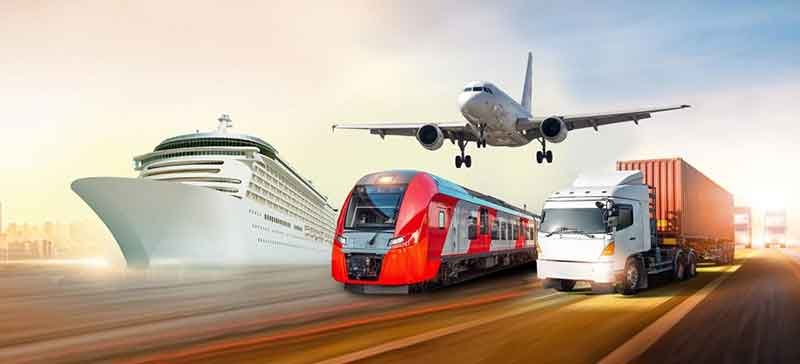
Research and Shortlisting:
Begin your work by searching for freight forwarders that can facilitate the shipment of goods from China into the US. Consider a company that has some experience in handling your line of business, have a good history of operation, and favorable comments from previous customers. This will help you to give you a short list of companies to work with.
Check Credentials and Certifications:
Below is a checklist of the credentials and certification that each of the freight forwarders listed in your list should possess.
They must be licensed and registered with the relevant authorities in both China and the US.
Look for accreditations like the Federal Maritime Commission license for ocean freight forwarders.
Research and Shortlisting:
Begin your work by searching for freight forwarders that can facilitate the shipment of goods from China into the US. Consider a company that has some experience in handling your line of business, have a good history of operation, and favorable comments from previous customers. This will help you to give you a short list of companies to work with.
Check Credentials and Certifications:
Below is a checklist of the credentials and certification that each of the freight forwarders listed in your list should possess.
They must be licensed and registered with the relevant authorities in both China and the US.
Look for accreditations like the Federal Maritime Commission license for ocean freight forwarders.
Evaluate Experience and Expertise:
Judge their various experiences and fields of expertise in the shipment to the US from China. Determine if they have relevant knowledge regarding customs regulations, documentation, and transportation networks of the two countries involved in the transaction. After comparing a number of services listed, choose a forwarder who has vast experience in your industry and more understanding of your particular shipping needs.
Request References and Testimonials:
Request references or testimonials of previous clients who have shipped products similar to yours from China to the US. Call these references to understand better the reliability, communication, and overall performance of the freight forwarder.
Compare Services and Pricing:
Get quotes from several freight forwarders, and compare the services offered and the prices for each. Consider the shipping method: by air, ocean, rail; the length of time in transit; the insurance coverage; additional services such as customs clearance or warehousing. Choose a forwarder that will charge you competitive pricing for an adequate span of services to accommodate your needs.
Communication and Responsiveness:
Rate each freight forwarder in terms of communication and responsiveness to your initial inquiry. A good freight forwarder will be responsive to answer all of your questions and provide information regarding the status of your shipment as well as handle special needs through personalized service throughout the shipping process.
Visit Their Facilities (if possible):
Wherever possible, pay a visit to the premises of preselected freight forwarders to assess their operating capability, infrastructure, and quality control. A good forwarder should have well-maintained premises along with advanced technology that ensures your goods are handled safely and efficiently.
Negotiate Terms and Contracts:
Once you’ve found a preferred freight forwarder, discuss and agree on the terms of the contract. Clearly outline pricing, terms of payment, liability coverage, and other necessary details to ensure no confusion in the future.
These steps and due diligence will result in finding an appropriate freight forwarder for your shipping from China into the US, and it will be of great help to ensure dependability and cost-effectiveness in the transportation of your goods.
4. Shipping Routes from China to the USA
Shipping routes from China to the USA depend on the chosen mode of transportation: by sea, air, or rail. The following are overviews of the main shipping routes for each mode:
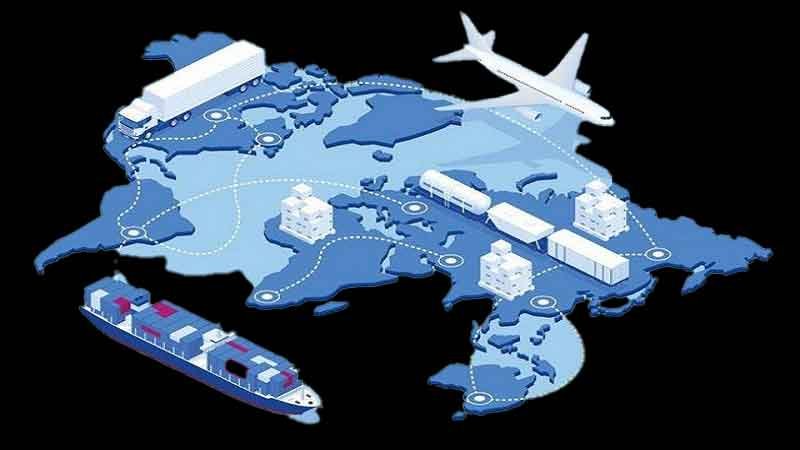
Sea Freight Routes:
- Trans-Pacific Route: This is the most common sea freight route from China to the USA, concerning shipping containers across the Pacific Ocean to West Coast ports such as Los Angeles, Long Beach, Oakland, and Seattle.
- East Coast Route: Some cargo also moves through the Panama Canal to various East Coast ports such as New York/New Jersey, Savannah, and Charleston. This route offers access to markets in the East Coast and Midwest regions of the USA.
- The Gulf Coast Route: Shipping merchandise via southern states and central USA markets can be served by ports such as Houston and New Orleans.
Air freight routes:
Direct flights are available from major China airports like Shanghai Pudong, Guangzhou Baiyun, and Beijing Capital to many US main airports, such as Los Angeles International Airport, John F. Kennedy International Airport, and Chicago O’Hare International Airport. These direct connections will make transport smooth and fast for goods transport.
- Transhipment Hubs: Alternatively, some air cargo may pass through transshipment hubs like Hong Kong, Seoul, or Tokyo before it actually reaches the USA. Options for the better outcome in air freight transportation allow connection and consolidation opportunities.
Rail Freight Routes:
- Trans-Eurasian Rail: For example, the railway freight service between China and Europe, one of which is the China-Europe Railway Express, could probably pass through countries like Kazakhstan, Russia, and Belarus, en route to Europe. Goods can then be reexported by sea or air from Europe to the USA.
- China-US Rail: While less common than by sea and air, efforts have been made to establish rail freight services that will connect China directly with the USA. It would pass through various countries in Asia and Europe before crossing the Atlantic by means of a rail ferry or other.
Each shipping route has its cost, transit time, capacity, and accessibility strengths to various regions of the USA. The route would be chosen based on factors such as how urgent the shipment delivery is required, the amount of budget one can afford to pay for shipment, the nature of goods shipped, and the ultimate destination of the cargo in the USA. It goes without saying that with the guidance of a well-informed freight forwarder, one can be able to identify the most suitable shipping route from among those given.
5. What is the Best Shipping Routes from China to the US
The “best” shipping route from China to the US would depend on factors in terms of transit time, cost, reliability, and your shipment’s particular requirements. That being said, there are routes generally held in high regard for reasons such as frequency of service, capacity, and accessibility that make them stand out as popular and efficient. The following are some of the commonly used routes when shipping goods from China to the US:

Sea Freight Routes:
- Trans:Pacific Route to West Coast Ports: This could be a more economical option with increased frequencies. Key US West Coast ports, including Los Angeles, Long Beach, and Oakland, serve as crucial entry points for cargo originating from China.
- East Coast via Panama Canal: Longer than the Trans-Pacific, shipment through the Panama Canal allows the option for East Coast ports to include New York/New Jersey, Savannah, and Charleston. East coast via Panama Canal is more suitable for the eastern and central parts of the US.
Air Freight Routes:
There are direct flights from major airports in China to the main US airports such as Los Angeles, Chicago, and New York. Direct flights guarantee speed and dependability of delivery. Highly valued or perishable cargo is more appropriately channeled through direct flights.
- Transshipment via Air Cargo Hubs: Besides, cargo can also be transshipped in one of the several air cargo hubs on the Asian or European continents with facilities that reach all the US destinations. It has some merits in facilitating flexibility and the chance for consolidation, especially for cargo from or to several origins or destinations.
Rail Freight Routes:
Trans Eurasian Rail to Europe, then Sea or Air to the US: The rail freight service between China and Europe provides another route for goods headed to the US. Upon arrival in Europe, goods will be further transported to the US by sea or air. This route is suitable for certain types of cargo and is a balanced option in terms of cost and transit time.
The most desirable shipping route depends, however, on one’s budget, urgency, volume, and US state destinations. You want to deal with professional freight forwarders or logistics service providers who can adequately assess your needs and recommend for you the most feasible route from a cost-effectiveness perspective, a shorter transit time, and reliability. Besides, constant market conditions information, capacity constraints, and changes in regulation would be fundamental to optimizing your shipping towards the best outcomes.
6.China to US Shipping Time
Shipping time from China to the US can vary significantly depending on several factors, including the chosen shipping mode (sea, air, rail), the specific origin and destination points, and any potential delays or disruptions along the route. Here’s a general overview of typical shipping times for each mode:
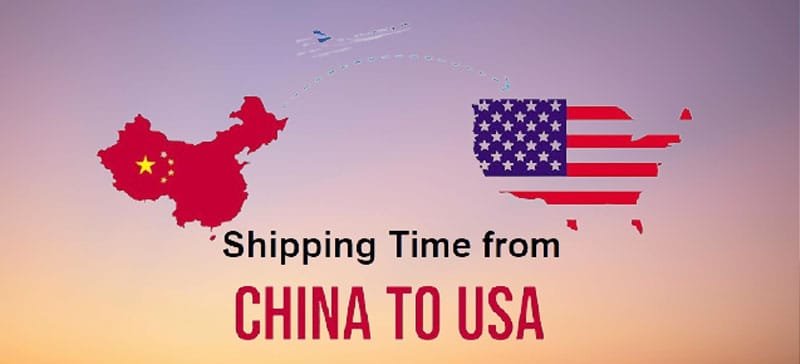
Sea Freight:
Trans-Pacific Route to West Coast Ports: Shipping by sea from China to major West Coast ports like Los Angeles, Long Beach, and Oakland typically takes around 12 to 20 days, depending on factors such as the specific port of origin in China and the shipping line’s transit time.
East Coast via Panama Canal: Shipping to East Coast ports like New York/New Jersey, Savannah, and Charleston via the Panama Canal may take longer, ranging from 20 to 35 days due to the additional distance and transit through the canal.
Air Freight:
Direct Flights: Air freight offers the fastest shipping option from China to the US, with typical transit times ranging from 1 to 7 days, depending on factors such as the departure and arrival airports, airline schedules, and customs clearance procedures.
- Transshipment via Air Cargo Hubs:If your shipment requires transshipment through air cargo hubs in Asia or Europe, transit times may be longer, ranging from 7 to 14 days or more, depending on the routing and connections.
Rail Freight:
Trans-Eurasian Rail to Europe, then Sea or Air to the US: Shipping by rail from China to Europe usually takes approximately 12 to 20 days, varying based on the chosen route and transit times.Upon arrival in Europe, additional time is necessary for further transportation by sea or air to the US, thereby extending the total shipping duration by several days.
It’s important to note that these are general estimates, and actual shipping times may vary based on factors such as weather conditions, port congestion, customs clearance procedures, and carrier schedules. Additionally, expedited or premium shipping services may offer shorter transit times but at a higher cost.
When planning your shipments from China to the US, it’s advisable to work closely with your freight forwarder or logistics provider to obtain accurate transit time estimates and to account for any potential delays or contingencies to ensure timely delivery of your goods.
7. Customs Charges from China to the US
Regarding importation from China into the US, different customs, charges, and fees may apply regarding specific factors: value of the goods, class at which the good falls, and further treatments according to trade agreements or regulations. Here are the major customs charges that you may come in contact with:
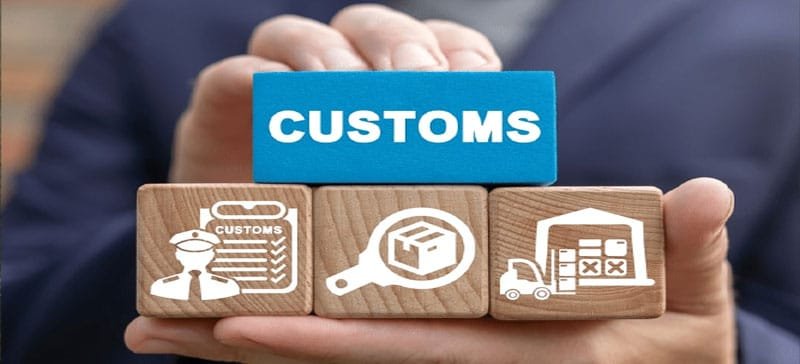
Customs Duties:
Customs duties are a kind of tax that US government levies on some kinds of goods brought into its territory. Duties further depend upon the classification of your goods within the HTS and their country of origin. The duty rates can be extremely broad, from zero for some items to a high percentage in other cases.
Import Processing Fees:
Import Processing Fee: CBP may also charge an import processing fee for the processing and handling of the merchandise being imported; this is generally a per shipment flat price and also independent of the customs duties.
Harbor Maintenance Fee (HMF):
The HMF is applied to all imports on arrival through a US port to cover the maintenance and dredging of the facilities.
Generally assessed as a percent of cargo value, it pays to keep US ports and harbors.
Merchandise Processing Fee (MPF):
The Merchandise Processing Fee, which CBP charges on almost all merchandise imported into the US, is another fee to consider.
It is calculated by the value of the merchandise being brought in, with minimum and maximum limits.
Antidumping and Countervailing Duties:
Antidumping and countervailing duties are special kinds of duties imposed on imported merchandise sold in the United States at less than the fair market value-dumped-or subsidized by a foreign government.
These remedies come in to ensure domestic industries are fairly competed against.
Other Charges:
Additional charges could include, but were not limited to, inspection fees, storage fees, or penalties arising from failure to conform to customs regulations associated with any particular shipment.
For that, it is important that you work hand in hand with your freight forwarder or customs broker, consulting the best shipping professionals who can explain and approximate the customs fees and charges applying to the importation of merchandise from China to the United States.
Precise classification of your goods, correct valuation, and adherence to customs regulations will go a long way toward minimizing their contributions to the overall import expense. Moreover, to the extent possible, utilizing duty relief programs or free trade agreements where available may serve to lower customs duties and fees for qualified shipments.
8.Requirements to Import from China
Importing goods from China into the US involves a number of requirements to be met by an importer to comply with customs regulations and other lawful obligations. Some of the major requirements which you need to consider are mentioned below.
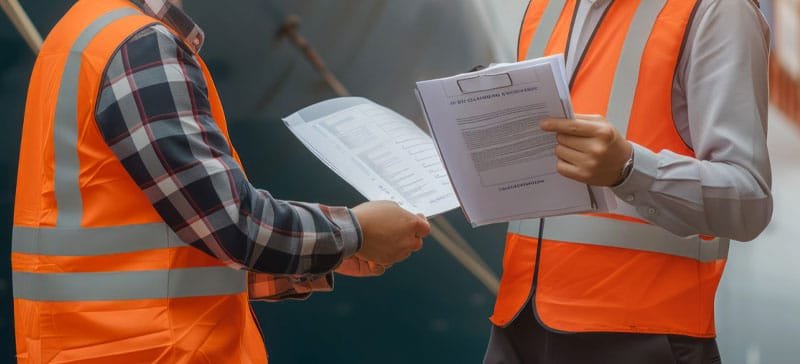
Business Registration:
Your business needs to get itself registered and approved to operate import/export.
Get any license or permit that may be required from higher authorities.
Requirements to Import
EIN or Tax ID:
Get an EIN or TIN from the IRS, in case you are importing goods for a commercial transaction.
This number will be used in tax reporting and customs clearance.
Importer of Record (IOR):
Appoint an Importer of Record-IOR-who shall be responsible for ensuring customs regulations compliance, customs duties and fees payment, and representation for the importer during customs transactions.
Customs Bond:
Get a customs bond to expedite customs clearance. A bond covers the payment of duties, taxes, and fees that are payable to CBP.
Even though bonds are required for imports whose value is $2,500 or higher, it is highly advisable to secure a bond for every importation.
Importer Security Filing (ISF):
Other requirements include filing an Importer Security Filing, also commonly called 10+2 filing, with CBP.
It has to be filed at least 24 hours before the goods start loading onto a vessel destined for the US.
The ISF provides CBP with prior information on the importer, consignee, seller, and merchandise being imported.
Commercial Invoice:
Provide a commercial invoice for goods being imported to be declared for customs clearance by CBP.
Describe the merchandise that is being declared under this entry, stating the quantity, unit value, country of origin for each item, and other pertinent information. This document identifies the basis for which customs duties and taxes will be calculated.
Packing List:
Packing List: The exporter needs to make a list of the contents that are contained in every package or container being shipped. A packing list aids the customs officer in ensuring the contents of the shipment have been rightly identified and match the import regulations.
Country of Origin Marking:
Comply with US Customs regulations by rightly marking the country of origin on each merchandise imported into the country.
The marking requirements are somewhat different for many goods and under various trade agreements.
Regulation Compliance:
Ensure that all regulations pertaining to product safety standards, labeling requirements, and import restrictions or prohibitions related to specific goods are implemented.
Payment of Customs Duties and Fees:
Be prepared for paying taxes, fees, and customs duties on imported items imposed by CBP.
Payment of duties and fees is required before the release of goods from customs and is determined by the value and classification of goods.
This would be beneficial in accomplishing all the commitments and pursuing all the customs regulations accordingly, thereby easing the importation process from China to the US with a minimal chance of delay or penalty.
Leverage professional freight forwarders, customs brokers, and trade advisers for expert guidance in overcoming complications and ensuring adherence to regulations.
9. Cheap Products to Import from China
Importation of products from China, aside from consideration of market demand, has to balance cost-effectiveness and quality.
Below are categories of products one would consider relatively cheap to import from China:

Electronics Accessories:
Products in the category of phone cases, chargers, cables, headphones, and electronic gadgets remain popular and relatively cheap to produce in China.
These products have a great demand in the market and may be sourced at competitive prices.
Apparel and Fashion Accessories:
T-shirts, hoodies, dresses, hats, scarves, and jewelry are usually made in very competitive prices in China.
Since fashion is one of the fastest-developing industries, it is important to follow what is a trend and precisely what buyers need.
Home Decor and Housewares:
Find cheap decorative items, kitchenware, bedding sets, and organizing products for your home made in China.
These products are for a wide range of consumers and are also available in bulk at very competitive prices.
Locate an enormous selection of classic toys, electronic gadgets, educational games, and many more from China.
These products are pretty inexpensive to produce and target several age brackets and interests.
Personal Care and Beauty Products:
Skin care products, cosmetics, hair accessories, and grooming tools from China are available at competitive prices.
However, it has to strictly adhere to all the regulatory standards and quality control measures, particularly in the case of personally used products.
Household Electronics:
China has a genre of small household appliances, gadgets, and electronic devices, including power banks, Bluetooth speakers, and smart home gadgets.
These products combine affordability with functionality and hence are preferred options by the importers.
Stationery and Office Supplies:
Pens, notebooks, folders, desk organizers, and many other related stationery items, office supplies, and school supplies can be very cheaply produced in China.
These lines of products have a stable demand and also can be procured in bulk at much lower costs.
Outdoor and Sports Equipment:
Tents, camping equipment, sports accessories, fitness equipment, and outdoor recreational goods are commonly manufactured in China at low costs.
These are liked by adventure-seeking people and fitness-conscious individuals.
Research widely on low-cost products to sell from China. Have wide information on market demand, reliability of suppliers, and product quality.
Take note of the costs for shipment, import duty, and regulations applicable.
You shall be assured of smooth importation if you establish a good relationship with reliable suppliers and also ensure that at each and every step you conduct quality checks.
10. How to Get a Quote for Your Shipment
How to request a quotation for shipment from China to the US:

Gather Shipment Details:
You will be asked for all details concerning your shipment, like commodity type, quantity, weight, dimensions, packaging requirements, specific delivery dates required, and preferred method of shipment.
Find freight forwarders specializing in shipment from China to the US. Be sure to look out for the ones with successful records, experience in your industry, and good customer reviews.
Contact the Freight Forwarders:
Now, contact short-listed freight forwarders by way of email, telephone, or contact us form on their website. Provide them with all the details concerning your shipment that you were able to gather and whatever specific requirements or preferences you may have.
Request for a Quotation:
Obtain a detailed quotation from each of your selected freight forwarders on your shipment. The quotation shall include the details of the shipment methodology – air, sea, or rail – incoterms, origin and destination ports, transit time, and any extra services required, including customs clearance and insurance.
Provide Required Documents:
You may be asked to provide some more documents, which would include a commercial invoice, packing list, and specification of the product. All the information is required to be correct and complete for quoting purposes.
Provide Required Documents:
You may be asked to provide some more documents, which would include a commercial invoice, packing list, and specification of the product. All the information is required to be correct and complete for quoting purposes.
Compare Quotes:
Once you receive your quotes from these different freight forwarders, you are in a position to compare them. Here, consider issues such as the total price, transit time, the quality of service, and value-added services that are included in the price by each provider.
Ask Questions:
Never feel hesitant to question anything or request any clarification on the quotation or service from freight forwarders.
This would further make you clear as to what is covered within the quote and what to expect throughout the shipping process.
Negotiate and Finalize:
If called for, negotiate freight forwarder quotes with them in order to secure the best possible terms and pricing applicable to your shipment.
Once you are comfortable with the quote, finalize your agreement with the selected freight forwarder, and start making the shipping arrangement accordingly.
By following these steps along with close coordination with reputed freight forwarders, you will be able to get correct quotes for your shipment from China to the US and make informed decisions to keep the shipping process smooth and cost-effective.
Why Choose Topshipping Logistics?
Why Choose TopShipping Logistics? TopShipping Logistics is unique due to exclusive services, catering to the needs of our valued customers. Benefit from:
- 24/7 Dedicated Customer Support: Our team is on standby round the clock to address your inquiries and concerns in minimum time.
- Extensive Network of Offices: Offices in key Chinese cities like Shenzhen, Guangzhou, and Shanghai enable us to offer prompt pickups within 3 hours of authorization.
Free Pickup Service: Have logistics a breeze with free pickups from various supplier houses and save precious time and money. - Expert Repackaging: Our team offers free repackaging at the time of pickup, ensuring that shipments are optimally packed to save you shipping costs and to ensure safety in transit.
Free Warehousing: Free warehousing until the agreed ship date gives you the flexibility in logistics planning you may need. - Global Shipment Assistance: We offer full support for shipments across the globe, ensuring everything goes smoothly to ensure timely delivery to all major destinations.
- Strict Customer Confidentiality: We value your privacy, and be assured that your information is kept confidential at all times.
Shipping goods from China to the United States requires some major planning, paying attention to minute information, and coordinating with good and reliable partners.
Every step is relevant: selection of the products and the suppliers, going through customs, and arranging logistics.
TopShipping has been representing an experienced freight forwarder with such added-value services as 24/7 customer support, efficient pickup services, expert repackaging, quality inspection, and assistance with shipment anywhere in the world.
These services make this process of shipment smooth, preserve the integrity of the products, and ensure peace of mind. In the Import-Export business or TopShipping Logistics, confidentiality is a cardinal aspect of doing business.
Their information security is always a priority. Partnering with trusted logistics service providers, as well as following the best practices in importation, will assist in effecting shipments from China to the US at relatively cheaper costs and with minimal hustle. In this regard, therefore, businesses can undertake international trade with confidence and assured success through support from reliable partners.

TopShipping
With years of experience in logistics and freight forwarding, the author is passionate about making shipping smoother and more efficient.
As a leader at TopShipping, they’ve developed a deep understanding of supply chain management, international shipping rules, and creative logistics solutions. They’re driven by a desire to help businesses succeed by delivering reliable, customer-focused services.
Over the years, they’ve also shared their expertise by writing for various industry publications, offering practical tips and insights on the latest trends in logistics. Thanks to their leadership, TopShipping has become a trusted name for companies looking for hassle-free global freight solutions.
Comment Section
Comment
Write your idea about "Top 10 things to consider when shipping from China to US"


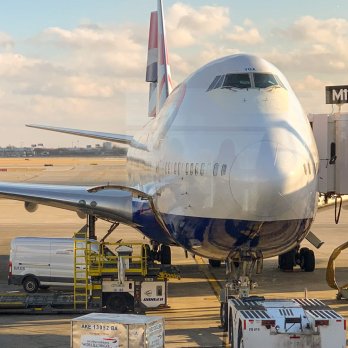
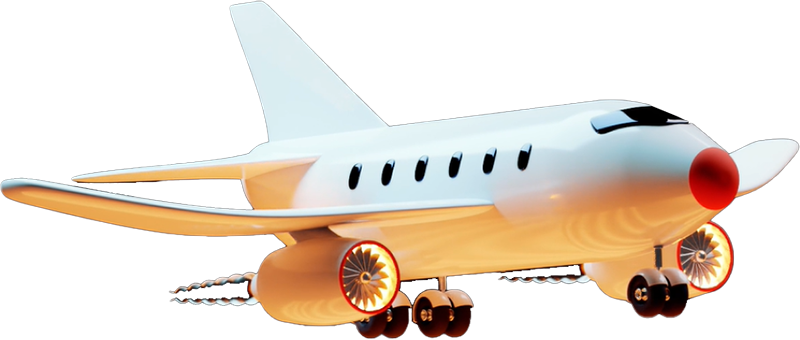
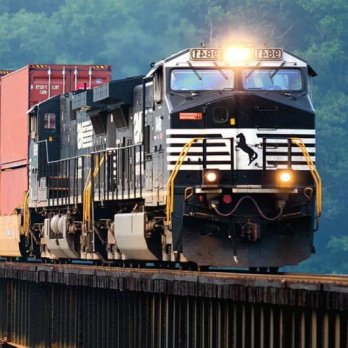
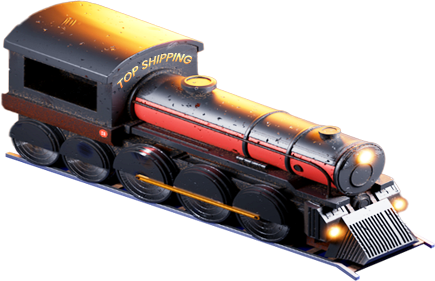
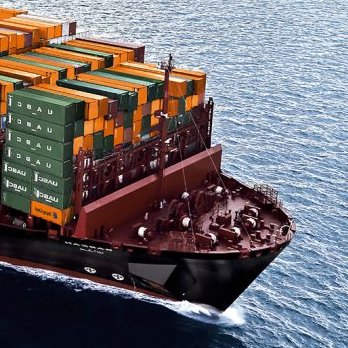
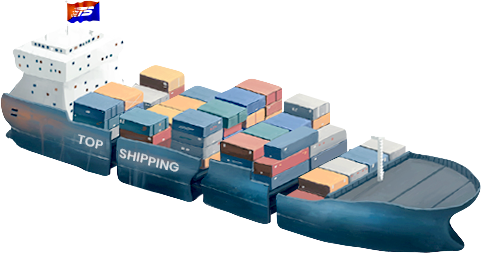
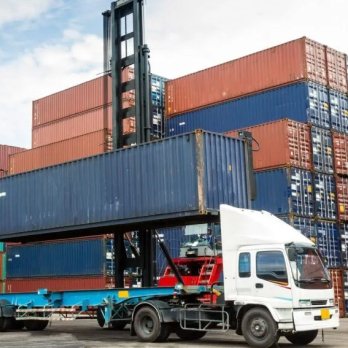
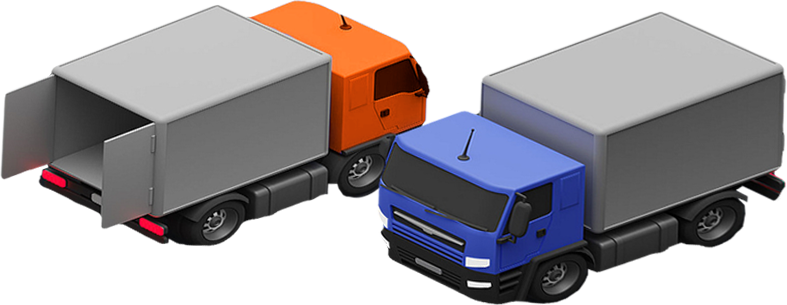
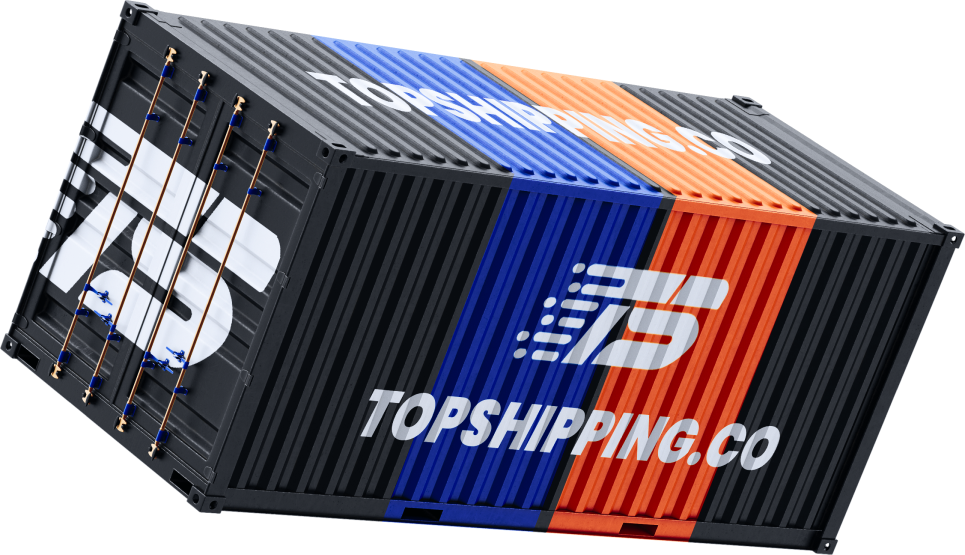


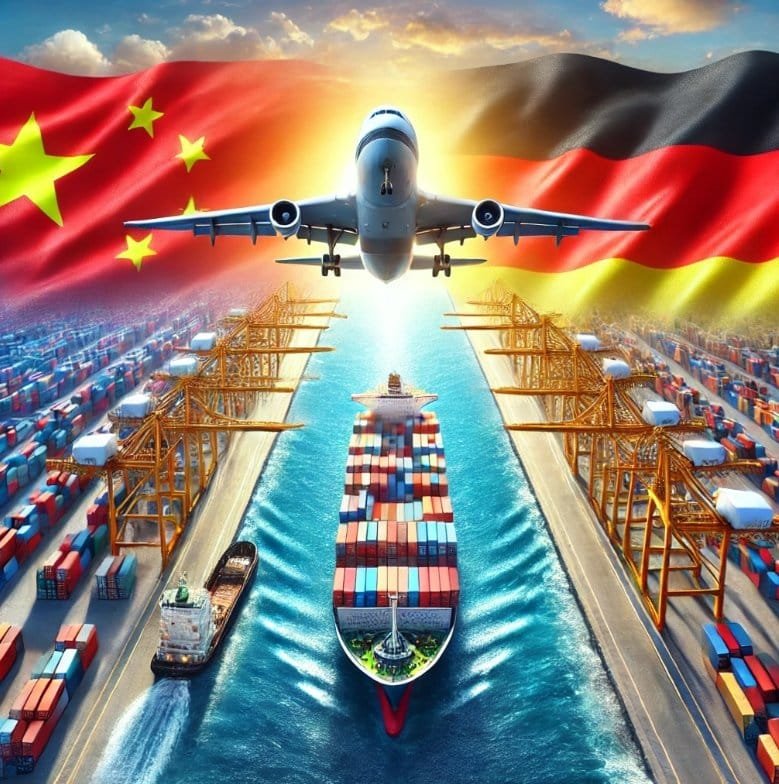


No comments yet.